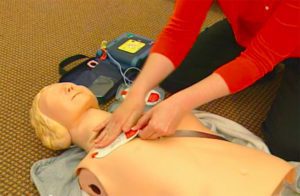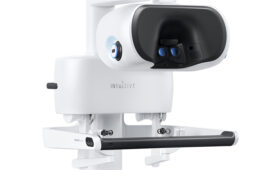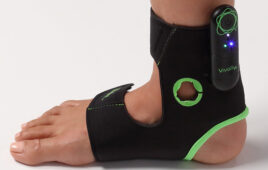
CPR training (Image courtesy of American Heart Association)
Royal Philips (NYSE:PHG) and the American Heart Association have paired up to increase sudden cardiac arrest (SCA) survival rates in densely populated cities around the world. The Connected Pulse program combines education programs to increase awareness of CPR with the use of publicly-available automated external defibrillators (AEDs), and new technologies to strengthen the chances for survival until the patient reach the hospital.
The American Heart Association estimates that 70% to 80% of sudden cardiac arrests occur outside the hospital. For every minute that passes without CPR and defibrillation, the patient’s chance of survival decreases by 7% to 10%. Bystander intervention and treatment with an AED can triple the survival rate to 31.4%, a heart association study notes.
Connected Pulse is designed to help improve patient survival by:
- Alerting emergency medical services (EMS).
- Administering CPR to the patient.
- Delivering AED treatment.
- Having EMS provide advanced critical life support.
Training and awareness programs increase the likelihood of a lay responder being on-hand to provide CPR and treatment using an AED. Mapping AEDs and automated alerting of nearby lay responders may significantly increase survival rates, according to Philips and the heart association.
Components of Connected Pulse will include:
-
- GPS positioning to identify the nearest available AED and a CPR-certified person to help.
- Command center software that guides dispatch operators to coordinate care delivery to the patient.
- Integration and an analytics engine that uses industry standards to provide data-driven decisionmaking and enable smooth data transfer across systems.
- Telephone CPR training for dispatch operators to give hands-only CPR instructions over the phone until the emergency responders arrive. Out-of-hospital cardiac arrest patients who receive telephone CPR are 64% more likely to survive to discharge than those who do not receive CPR, according to an article in Resuscitation Journal.
- Updated EMS training.
- Training kiosks with interactive touch screens that offer a 30-second CPR test. These are currently available in 32 high-traffic areas in the U.S., including airports. More than 160,000 people have been trained on the kiosks.
- CPR in Schools training kit to train 10 to 20 students at a time.
- American Heart Association training centers, currently available in 80 countries, including China, Brazil, Japan, Mexico, United Arab Emirates, Italy, and India.
- Public education training campaign to drive awareness of cardiac arrest symptoms and promote bystander education.
- In-hospital CPR quality improvement.
- The Heartsaver Hero Award program to recognize anyone in the community who has been part of the effort.
“This alliance marks the first time two major global organizations have come together to offer a worldwide, scalable solution to increase out-of-hospital sudden cardiac arrest survival rates,” said American Heart Association CEO Nancy Brown in a prepared statement. “When we educate everyone about the life-saving skill of CPR and make AEDs readily available, we increase the chance of survival for all people. Together with Philips, we’ve combined trusted science and innovative health technology to create a positive health impact in all communities around the world.”
Philips and the AHA expect to announce the first pilot cities participating in the program in 2019.




